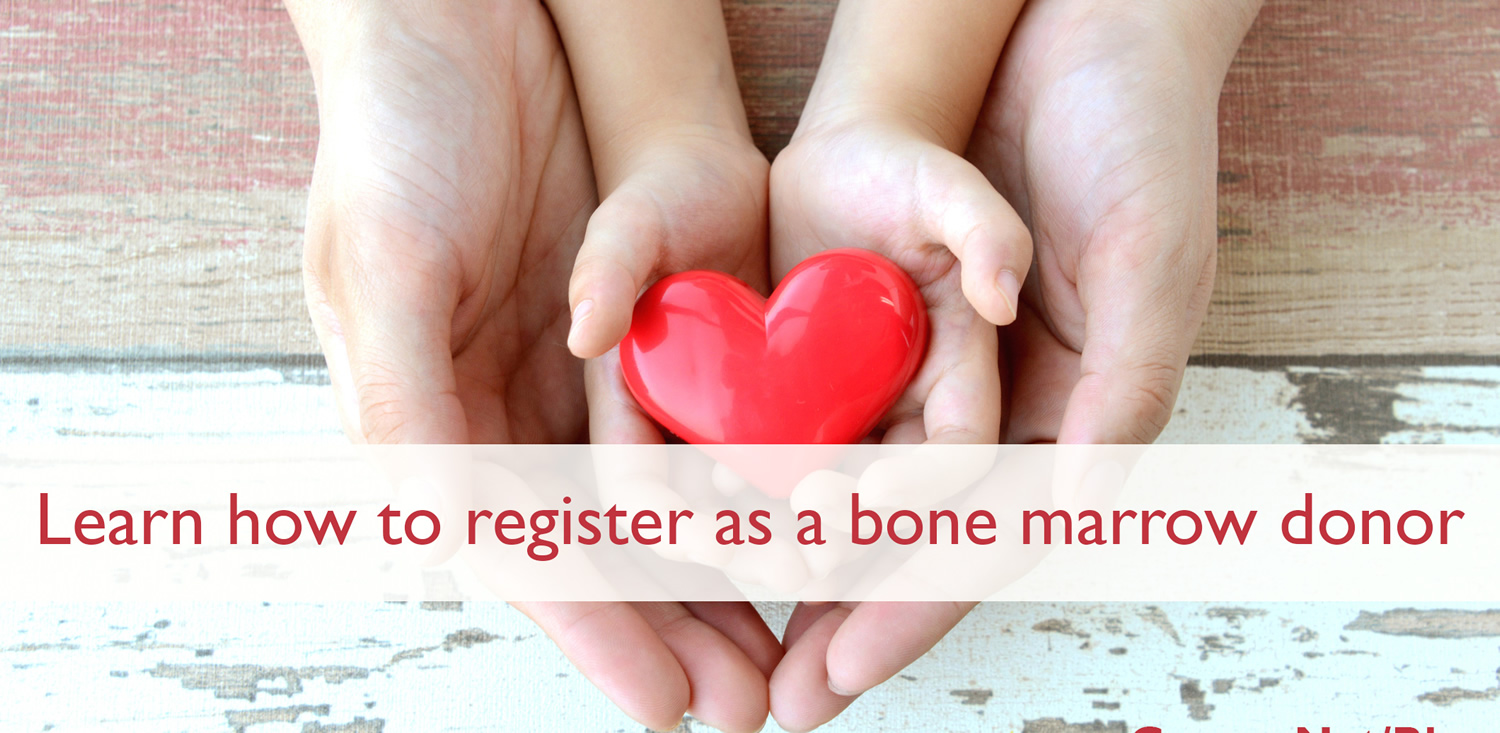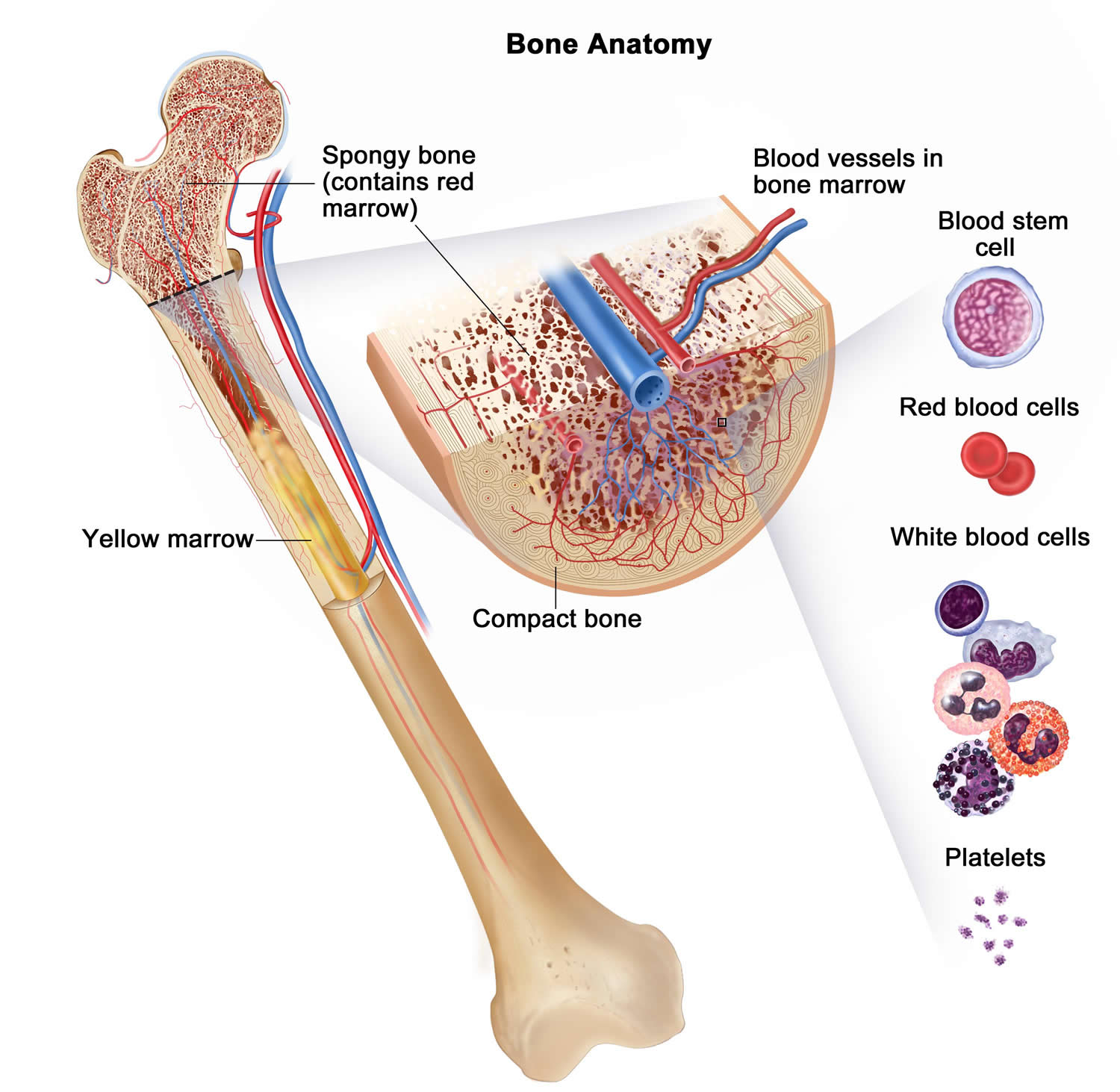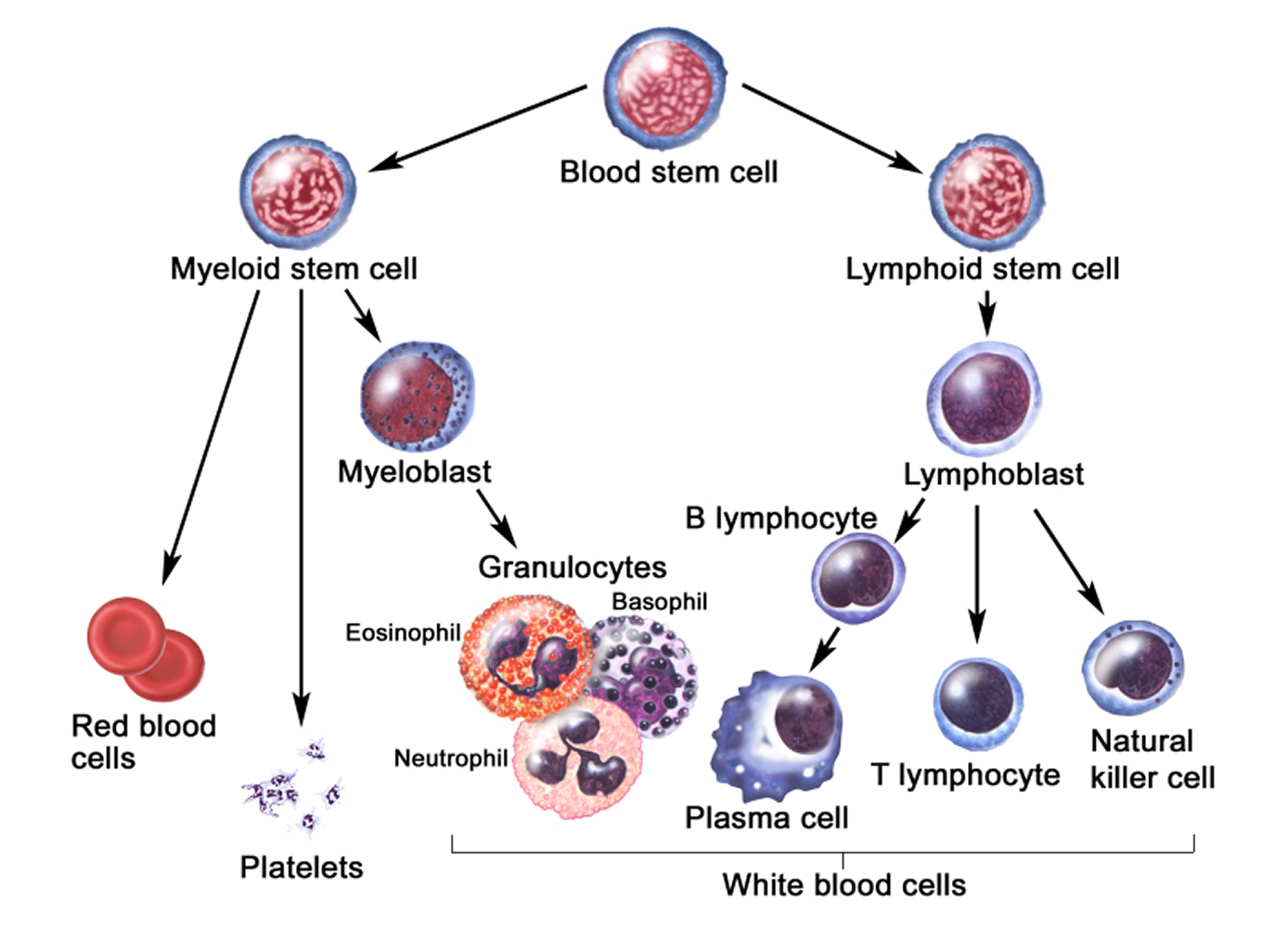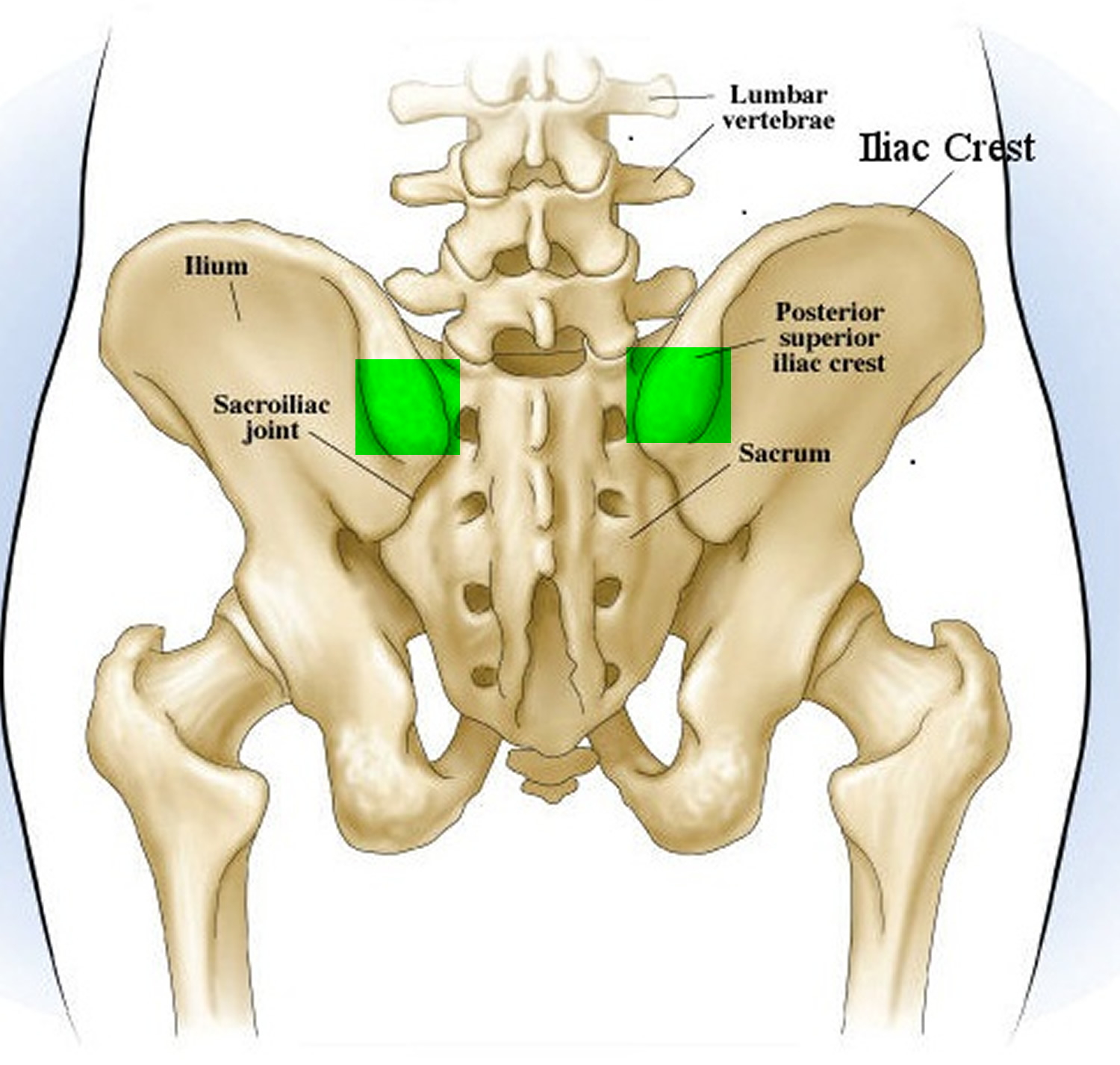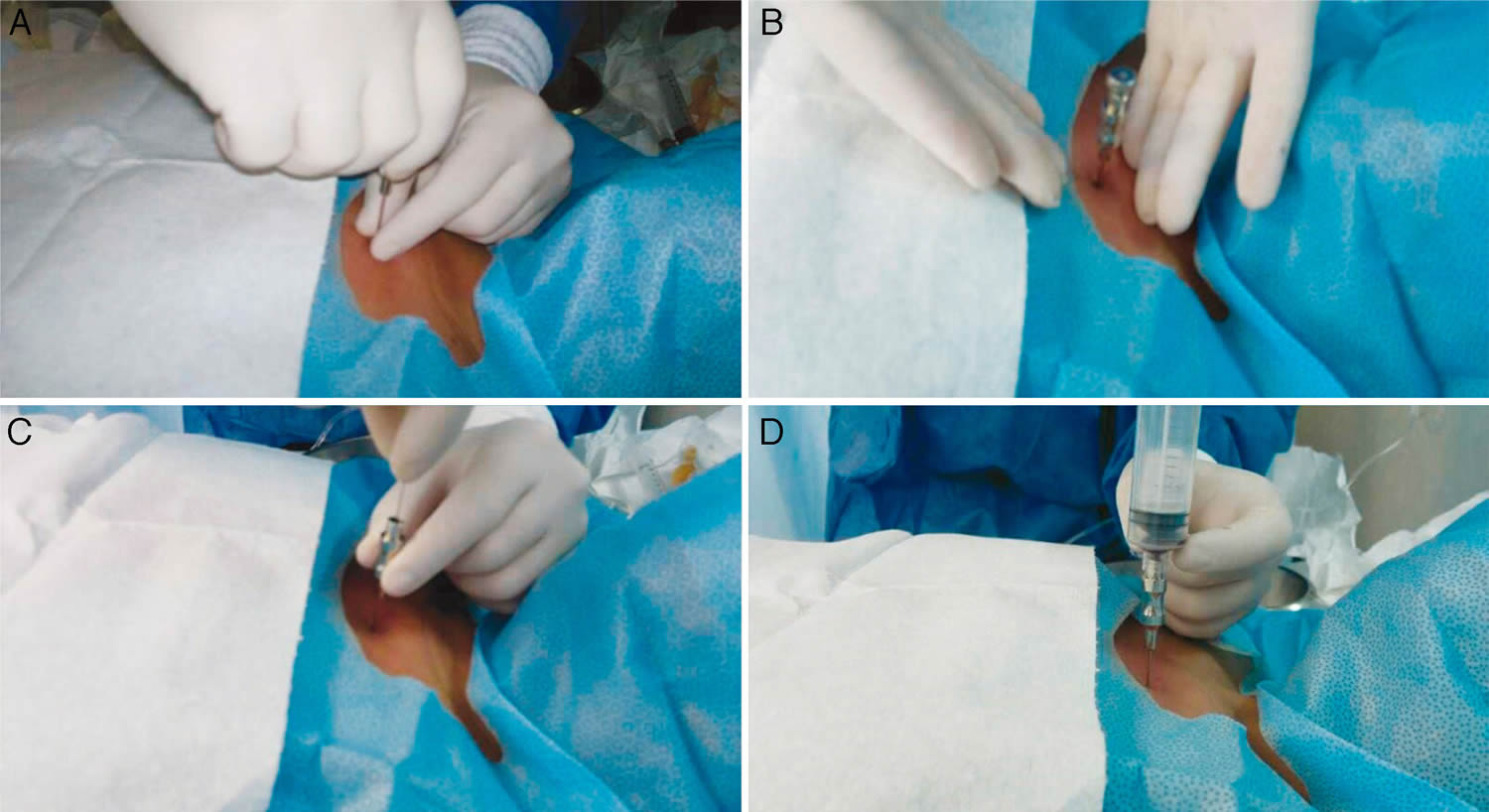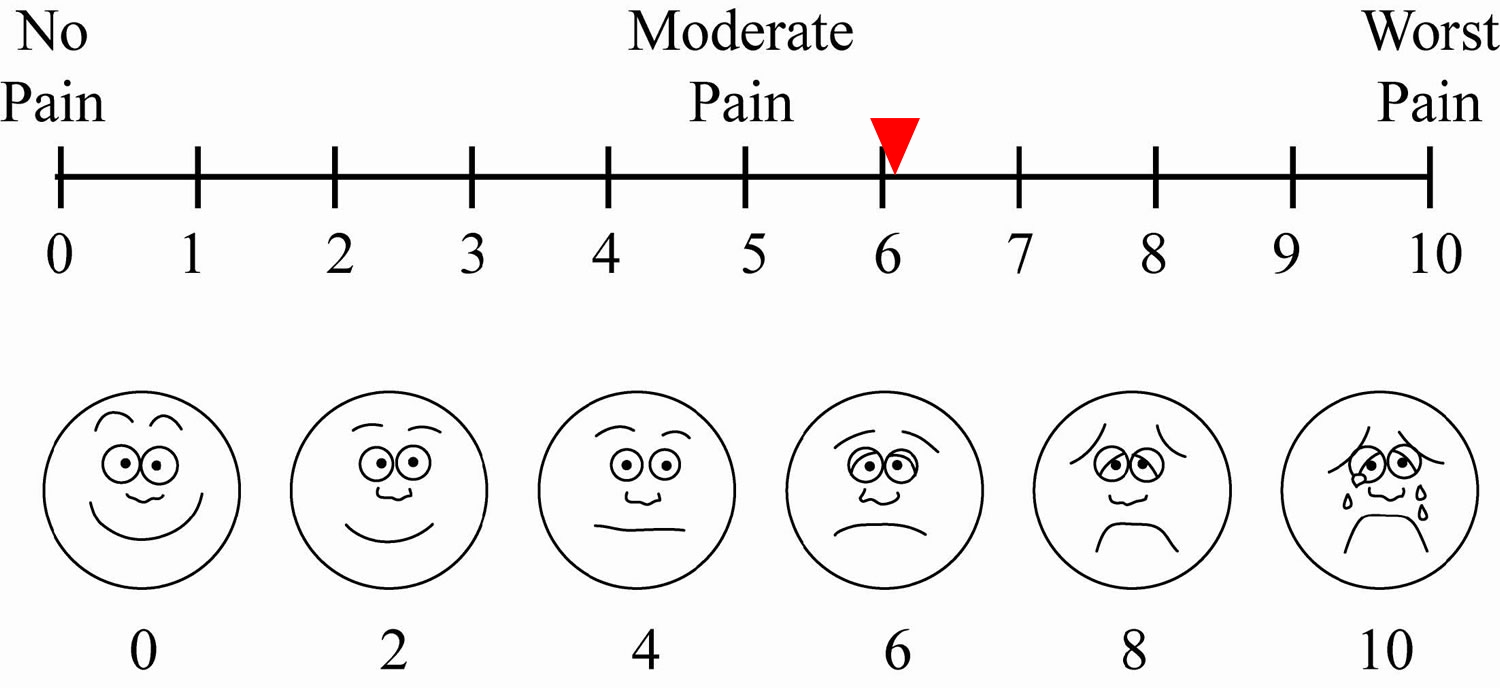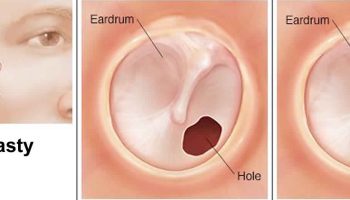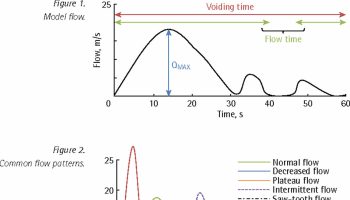What is bone marrow donation
Bone marrow donation is one of two methods of collecting blood forming cells for bone marrow transplants. Bone marrow donation is a surgical procedure that takes place in a hospital operating room. Doctors use needles to withdraw liquid marrow (where the body’s blood-forming cells are made) from both sides of the back of your pelvic bone. You will be given anesthesia and feel no pain during the donation. After bone marrow donation, your liquid marrow is transported to the patient’s location for transplant. Typically, the hospital stay for marrow donation is from early morning to late afternoon, or occasionally overnight for observation. The bone marrow donation will take place in a hospital that is experienced and participates in bone marrow donation collections.
Bone marrow is the soft, sponge-like material found inside bones. It contains immature cells known as hematopoietic or blood-forming stem cells. (Hematopoietic stem cells are different from embryonic stem cells. Embryonic stem cells can develop into every type of cell in the body. Embryonic stem cells are not found in bone marrow.) Hematopoietic stem cells divide to form more blood-forming stem cells, or they mature into one of three types of blood cells: white blood cells, which fight infection; red blood cells, which carry oxygen; and platelets, which help the blood to clot. Most hematopoietic stem cells are found in the bone marrow, but some cells, called peripheral blood stem cells, are found in the bloodstream. Blood in the umbilical cord also contains hematopoietic stem cells. Cells from any of these sources can be used in transplants.
Common side effects of bone marrow donation reported 2 days after donation: Back or hip pain 84%, Fatigue 61%, Throat pain 32%, Muscle pain 24%, Insomnia 15%, Headache 14%, Dizziness 10%, Loss of appetite 10%, Nausea 9%.
The median time to full recovery for a bone marrow donation is 20 days. Recovery after bone marrow donation: 5% – 2 days, 18%-7 days, 71%-30 days, 97%-180 days, 99%-1 year.
Types of Bone Marrow Donation
There are two types of bone marrow donation:
- Autologous bone marrow transplant is when people donate their own bone marrow. “Auto” means self.
- Allogenic bone marrow transplant is when another person donates bone marrow. “Allo” means other.
With an allogenic transplant, the donor’s genes must at least partly match the person’s genes. A brother or sister is most likely to be a good match. Sometimes parents, children, and other relatives are good matches. But only about 30% of people who need a bone marrow transplant can find a matching donor in their own family.
Bone Marrow Registries
The 70% of people who do NOT have a relative who is a good match may be able to find one through a bone marrow registry. The largest one is called Be the Match (https://bethematch.org/). It registers people who would be willing to donate bone marrow and stores their information in a database. Doctors can then use the registry to find a matching donor for a person who needs a bone marrow transplant.
How to Join a Bone Marrow Registry
To be listed in a bone marrow donation registry, a person must be:
- Between the ages of 18 and 60
- Healthy and not pregnant
People can register online or at a local donor registry drive. Those between the ages of 45 to 60 must join online. The local, in-person drives only accept donors who are younger than age 45. Their stem cells are more likely to help patients than stem cells from older people.
People who register must either:
- Use a cotton swab to take a sample of cells from the inside of their cheek
- Give a small blood sample (about 1 tablespoon or 15 milliliters)
The cells or blood is then tested for special proteins, called human leukocytes antigens (HLA). HLAs help your infection-fighting system (immune system) tell the difference between body tissue and substances that are not from your own body.
How are peripheral blood stem cells obtained?
The stem cells used in peripheral blood stem cell transplantation come from the bloodstream. A process called apheresis or leukapheresis is used to obtain peripheral blood stem cells for transplantation. For 4 or 5 days before apheresis, the donor may be given a medication to increase the number of stem cells released into the bloodstream. In apheresis, blood is removed through a large vein in the arm or a central venous catheter (a flexible tube that is placed in a large vein in the neck, chest, or groin area). The blood goes through a machine that removes the stem cells. The blood is then returned to the donor and the collected cells are stored. Apheresis typically takes 4 to 6 hours. The stem cells are then frozen until they are given to the recipient.
How are umbilical cord stem cells obtained?
Stem cells also may be retrieved from umbilical cord blood. For this to occur, the mother must contact a cord blood bank before the baby’s birth. The cord blood bank may request that she complete a questionnaire and give a small blood sample.
Cord blood banks may be public or commercial. Public cord blood banks accept donations of cord blood and may provide the donated stem cells to another matched individual in their network. In contrast, commercial cord blood banks will store the cord blood for the family, in case it is needed later for the child or another family member.
After the baby is born and the umbilical cord has been cut, blood is retrieved from the umbilical cord and placenta. This process poses minimal health risk to the mother or the child. If the mother agrees, the umbilical cord blood is processed and frozen for storage by the cord blood bank. Only a small amount of blood can be retrieved from the umbilical cord and placenta, so the collected stem cells are typically used for children or small adults.
How is bone marrow stem cells obtained?
The hematopoietic stem cells used in bone marrow transplantation come from the liquid center of the bone, called the marrow. In general, the procedure for obtaining bone marrow, which is called “harvesting,” is similar for all three types of bone marrow transplantations (autologous, syngeneic, and allogeneic). The donor is given either general anesthesia, which puts the person to sleep during the procedure, or regional anesthesia, which causes loss of feeling below the waist. Needles are inserted through the skin over the pelvic (hip) bone or, in rare cases, the sternum (breastbone), and into the bone marrow to draw the marrow out of the bone. Harvesting the marrow takes about an hour.
The harvested bone marrow is then processed to remove blood and bone fragments. Harvested bone marrow can be combined with a preservative and frozen to keep the stem cells alive until they are needed. This technique is known as cryopreservation. Stem cells can be cryopreserved for many years.
Figure 1. Bone marrow anatomy
Figure 2. Blood cell development. A blood stem cell goes through several steps to become a red blood cell, platelet, or white blood cell
Figure 3. Bone marrow aspiration and biopsy
Bone marrow aspiration procedure
Bone marrow aspiration has gained momentum due to the possibility of obtaining hematopoietic stem cells. These are useful not only in the treatment of hematological and non-hematological diseases, but also for the purpose of tissue reconstruction 1.
The following describes the general technique used in sternal bone marrow aspiration. The technique used in iliac spine sampling is described in connection with bone marrow biopsy.
How you prepare for a bone marrow biopsy and bone marrow aspiration
Bone marrow biopsy and bone marrow aspiration are often performed on an outpatient basis in a hospital, clinic or doctor’s office. Special preparation usually isn’t needed. However, you may want to:
- Tell your doctor about medications and supplements you take. Certain medications and supplements may increase your risk of bleeding after a bone marrow biopsy and aspiration.
- Tell your doctor if you’re nervous about your procedure. Discuss your worries about the exam with your doctor. In some cases, your doctor may give you a sedative medication before your exam, in addition to a numbing agent (local anesthesia) at the site where the needle is inserted.
Before the bone marrow aspiration procedure
Your blood pressure and heart rate will be checked, and you’ll be given some form of anesthesia to keep you comfortable.
Most people need only local anesthesia, as bone marrow aspiration, in particular, can cause brief, but sharp, pain. You’ll be fully awake during the procedure, but the aspiration and biopsy site will be numbed to reduce pain.
- Bone marrow aspiration and bone marrow biopsy is usually performed under local anesthesia. General anesthesia is reserved for children and/or very anxious patients.
If you feel anxious about pain, you may be given an IV medication so that you’re either completely or partially sedated during the bone marrow exam.
The area where the doctor will insert the biopsy needle is marked and cleaned. The bone marrow fluid (aspirate) and tissue sample (biopsy) are usually collected from the top ridge of the back of a hipbone (posterior superior iliac spine or crest). Sometimes, the front of the hip may be used.
Bone marrow aspiration — but not biopsy — is occasionally collected from the breastbone or, in children under the age of 12 to 18 months, from the lower leg bone.
You’ll be asked to lie on your abdomen or side, and your body will be draped with cloth so that only the exam site is showing.
Bone marrow aspiration technique
The best site for bone marrow aspiration and biopsy is the posterior superior iliac spine. The first step is to identify the parts of the needle, and then locate the sampling site.
- The bone marrow aspiration is usually done first.
- Correct injection of local anesthesia is crucial for the patient’s experience of the procedure. Inject 5–10 ml Xylocain® 10 mg/ml with adrenaline to reduce bleeding in the area. Inject a minimal amount intracutaneously. The patient will feel when the needle apex meets the periosteum. Rotate the syringe 180° to distribute the local anesthesia in the area. Allow the anesthesia to work before expanding the area by angling the cannula in four directions. To keep the cannula from simply turning in the same area, the cannula should be pulled back slightly each time before changing directions.
- The doctor makes a small incision with the scalpel before the biopsy to avoid unnecessary trauma of the skin, then inserts a hollow needle through the bone and into the bone marrow. The incision will heal better. Using a syringe attached to the needle, the doctor withdraws a sample of the liquid portion of the bone marrow. You may feel a brief sharp pain or stinging. The aspiration takes only a few minutes. Several samples may be taken.
- The health care team checks the sample to make sure it’s adequate. Rarely, fluid can’t be withdrawn and the needle is moved for another attempt.
Sternal puncture technique
- With the patient in the supine position, locate the sternal angle using gentle digital palpation. Use the needle cover to locate the intersection between the sternal angle and the midsternal line (Figure 5A and B). To facilitate the procedure, you will be asked to extend your neck (Figure 5C). The area will be sterilized and cover it with a surgical aperture drape.
- Administer local anaesthetic with 1% lidocaine, using 3 ml to anaesthetise the skin and subcutaneous tissue. Then, gently inject lidocaine at various points on the cortical bone, administering 1 ml anaesthetic with each injection.
- After a waiting time of between 3 and 5 min, start the procedure. First, identify the parts of the bone marrow needle (Figure 5D). Hematologists usually use size 16 and 18 needles.
- Insert the needle at the previously marked site, through the skin and subcutaneous tissue until it abuts the bone.
- Push the needle through the bony cortex, rotating it on its axis until it is fixed in place at the desired depth (Figure 5A and B).
- Withdraw the stylet (Figure 6C), attach a 20ml syringe, and aspirate gently (Figure 6D).
- For a smear sample, aspirate only 1ml of fluid.
- The smear technique used will usually vary from one hospital to another.
Figure 5. Sternal puncture technique – Note: Sternal puncture. (A) Location of the sternal puncture site. The sternal angle, formed by the junction of the manubrium and the body of the sternum, lies 2cm below the sternal notch. (B) Gently mark the puncture site. (C) Inject 10ml lidocaine, initially at the level of the skin, and then in the periosteum. (D). Identify the parts of the Osgood needle before performing aspiration.
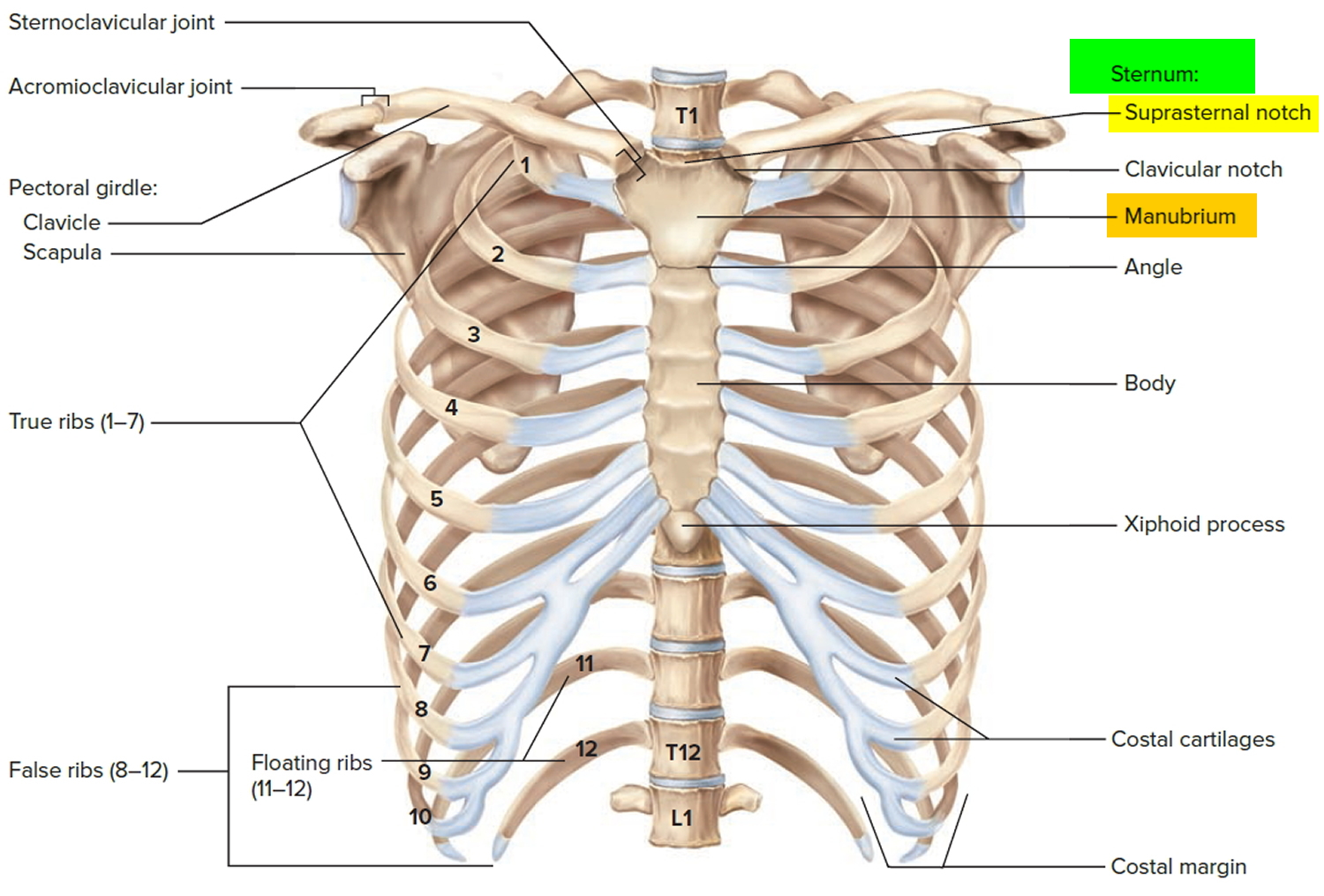 Figure 6. Sternal puncture technique – Note: (A) Introduce the needle by rotating it on its axis. (B) Continue until the needle is fixed in place. (C) Remove the stylet. (D) Draw the aspirate using a 20ml syringe. Only 1ml will be needed for the smear.
Figure 6. Sternal puncture technique – Note: (A) Introduce the needle by rotating it on its axis. (B) Continue until the needle is fixed in place. (C) Remove the stylet. (D) Draw the aspirate using a 20ml syringe. Only 1ml will be needed for the smear.After the bone marrow aspiration procedure
Pressure will be applied to the area where the needle was inserted to stop the bleeding. Then a bandage will be placed on the site.
If you had local anesthesia, you’ll be asked to lie on your back for 10 to 15 minutes and apply pressure to the biopsy site. You can then leave and go about your day, returning to normal activity as soon as you feel up to it.
If you had IV sedation, you’ll be taken to a recovery area. Plan to have someone drive you home, and take it easy for 24 hours.
You may feel some tenderness for a week or more after your bone marrow exam. Ask your doctor about taking a pain reliever, such as acetaminophen (Tylenol, others).
Site care
Wear the bandage and keep it dry for 24 hours. Don’t shower, bathe, swim or use a hot tub. After 24 hours you can get the aspiration and biopsy area wet.
Contact your doctor if you have:
- Bleeding that soaks through the bandage or doesn’t stop with direct pressure
- A persistent fever
- Worsening pain or discomfort
- Swelling at the procedure site
- Increasing redness or drainage at the procedure site
To help minimize bleeding and discomfort, avoid rigorous activity or exercise for a day or two.
Bone marrow aspiration complications
Bone marrow aspirations are generally safe procedures. Complications are rare but can include:
- Excessive bleeding, particularly in people with low numbers of a certain type of blood cell (platelets)
- Infection, especially in people with weakened immune systems
- Long-lasting discomfort at the biopsy site
- Penetration of the breastbone (sternum) during sternal aspirations, which can cause heart or lung problems
How do you donate bone marrow
What Happens During a Bone Marrow Donation
Donor stem cells can be collected in two ways.
1) Bone marrow harvest. This minor surgery is done under general anesthesia. This means the donor will be asleep and pain-free during the procedure. The bone marrow is removed from the back of your pelvic bones. The process takes about an hour.
After a bone marrow harvest, the donor stays in the hospital until they’re fully awake and can eat and drink. Side effects include:
- Nausea
- Headache
- Fatigue
- Bruising or discomfort in the lower back
You can resume normal activity in about a week.
There are very few risks for the donor and no lasting health effects. Your body will replace the donated bone marrow in about 4 to 6 weeks.
2) Peripheral blood stem cell collection. Most donor stem cells are collected through a process called leukapheresis.
- First, the donor is given 5 days of shots to help stem cells move from the bone marrow into the blood.
- During the collection, blood is removed from the donor through a line in a vein (IV). The part of white blood cells that contains stem cells is then separated in a machine and removed to be later given to the recipient.
- The red blood cells are returned to the donor through an IV in the other arm.
This procedure takes about 3 hours. Side effects include:
- Headaches
- Sore bones
- Discomfort from needles in the arms
Bone marrow donation guidelines
These bone marrow donation guidelines provide an overview of many medical conditions. They do not include every medical situation that may prevent you from donating. It’s important to note that marrow donation guidelines are not the same as blood donation guidelines.
Age
You will remain on the registry until your 61st birthday unless you request to be removed. Be The Match Registry® members are changed to an inactive status on the registry on their 61st birthday and are no longer available for patient searches. There are two main reasons:
Donor safety: As one ages, the chances of a hidden medical problem that donation could bring out increases, placing older donors at increased risk of complications. Since there is no direct benefit to the donor when they donate, for safety reasons we have set age 60 as the upper limit. It is important to note that the age limit is not meant to discriminate in any way.
To provide the best treatment for the patient: Studies have shown that patients who receive donated cells from younger donors have a better chance for long-term survival.
AIDS/HIV
If you have been diagnosed with HIV (AIDS) you cannot donate. If you are at risk for the HIV virus, your current medical status will be carefully evaluated.
Allergies
If you suffer from common allergies to animals, the environment, or medications, etc., you may be able to donate. If you have serious or life-threatening allergies to medications or latex, your health condition and allergies will need to be carefully evaluated.
Asthma
If you have asthma that is exercise-induced or is well-controlled and have had no attacks requiring oral (pill) or intravenous (IV) steroids or emergency care in the past two years, you may be able to donate. If you have asthma requiring regular/daily use of oral (pill) steroids, you will not be allowed to donate.
Arthritis
In general, if you have mild to moderate osteoarthritis or degenerative arthritis, you may be able to donate. Mild to moderate arthritis is defined as having little impact on daily activities, and is relieved by taking occasional medications. If you have arthritis affecting the spine, your condition will need to be carefully evaluated. If you have severe medical arthritic conditions such as rheumatoid, reactive, psoriatic and advanced stages of other types of arthritis, you will not be allowed to donate.
Autoimmune diseases
Most diseases which may be defined as autoimmune disorders, such as multiple sclerosis, systemic lupus, chronic fatigue syndrome and fibromyalgia, will prevent you from donating marrow or blood-forming cells. However, if you have a condition such as Hashimoto’s or Graves’ disease, you may be allowed to donate as long as the disease is well-controlled and you are medically stable.
Back, Neck, Hip, and Spine
Common back problems such as sprains, strains and aches should not interfere with a marrow donation. If you have had a single back surgery more than 5 years ago, and have no ongoing symptoms, you may be able to donate. If you have chronic/ongoing back pain (including persistent sciatica and/or numbness) requiring medical treatment (i.e., daily pain meds, physical therapy (PT), chiropractic treatments, etc.) you will not be able to donate.
The following back-related issues must be carefully evaluated to determine whether or not you may donate:
- Single surgery 2-5 years ago
- Multiple surgeries, no matter how long since procedures
- History of fracture 2-5 years ago from an injury
- History of herniated, bulging or slipped disc in any location of the back
- Mild osteoarthritis involving the spine, neck or hip
- Diagnosis of scoliosis, if no history of surgery or if the rods/pins have been removed and you are fully recovered
- Diagnosis of degenerative disc disease
If you have significant back problems and/or any questions regarding your medical condition, contact your local donor center.
Blood pressure
If you have elevated blood pressure (hypertension), you may donate if your condition is well-controlled by medication or diet and if there is no associated heart disease.
Breathing problems/sleep apnea
If you have breathing problems such as shortness of breath, sleap apnea, and/or a history of chronic bronchitis, chronic obstructive pulmonary disease (COPD), emphysema, pneumonia, a pneumothorax, pulmonary emboli, etc., please contact your local donor center to discuss your current health status.
Cancer
If you have a history of pre-cancerous cells, you are able to donate. If you have had cured, local skin cancer (basal cell or squamous cell), you may also be able to donate. If you have healed melanoma in situ, skin cancer, cervical cancer in situ, breast cancer in situ, or bladder cancer in situ you will be able to donate. (In situ cancer is diagnosed at a very early stage [stage 0] and is specifically called “in situ.”)
If you have been diagnosed and treated for a solid tumor type cancer and it has been more than 5 years since completion of treatment and no reoccurence, you may be able to donate. If your treatment included chemotherapy and/or radiation therapy, you will not be able to donate. If you have had any other form of cancer, you will not be able to donate — no matter the length of time since treatment or recovery.
Chemical dependency/mental health
If you have a history of chemical dependency and/or mental health issues, you may be allowed to donate after careful evaluation of your current situation. In general, if you have completed chemical dependency treatment, it has been at least 12 months since therapy, and you have no physical ailments that may put you at risk for donation, you may be able to donate.
If you have a condition such as attention deficit disorder (ADD), attention deficit hyperactivity disorder (ADHD), bipolar or manic-depressive disorder, or depression, you may be allowed to donate as long as the condition is well-controlled and you are medically stable. Mental health conditions such as schizophrenia, schizoaffective disorder or delusional disorder will prevent you from donating marrow or blood-forming cells.
It is important that you are committed and able to follow through with the donation process. Guidelines used to evaluate your current chemical dependency/mental health status are not meant to judge. They are meant to protect your safety and well-being and provide the best possible outcome for the patient.
Cold/flu
If you are called to donate marrow or blood-forming cells, you may not be able to donate if you show signs of a serious cold or flu at the time of donation. If you have been called as a potential match, it is important that you contact your local donor center if you develop cold or flu symptoms. Symptoms such as a fever greater than 100.0 degrees Fahrenheit, a productive cough, sore throat, headache(s), etc., need to be carefully evaluated.
Depression
If you have a history of depression that is stable and well-controlled, you may be able to donate. Contact your local donor center to discuss any other mental health conditions.
Diabetes
If your diabetes is well-controlled, you may be allowed to donate after careful evaluation of your current health status. In general, if your diabetes is well-controlled by either diet or oral (pill) medications, you may be able to donate. If you require insulin or any injected medications to treat diabetes or if you have diabetes-related serious health issues such as kidney, heart or eye disease, you are not able to donate. If you have questions regarding your diabetes, contact your local donor center.
Epilepsy
If you have epilepsy, you may be able to donate after careful evaluation of your seizure history. Certain situations may be associated with developing epilepsy. Examples include a family history, head injuries, stroke or other vascular diseases, and brain infections. In general, if you have not had any seizures in the past 12 months and the underlying reason for the seizures is acceptable, you may be allowed to donate.
Heart disease/stroke
In general, if you have heart disease, you may not donate. This includes a prior heart attack, any history of angioplasty, cardiac bypass surgery, heart valve replacement surgery or pacemakers. However, some heart conditions such as well-controlled irregular heartbeats (arrhythmias), mitral valve prolapse or successful cardiac ablation do not necessarily prevent donation. Your situation will be evaluated on an individual basis.
If you have a history of a stroke, a transient ischemic attack (TIA), an intracranial hemorrhage (epidural, subdural, subarachnoid), or other significant brain injury or surgery in the brain — even if currently recovered and without symptoms — you are not able to donate.
Hepatitis
You may donate if you have a history of fully-recovered documented hepatitis A. If you have received a vaccine to prevent hepatitis, you will also be permitted to donate.
If you have any of the following, you will be carefully evaluated to determine if you can donate:
- History of, or at risk for, hepatitis B or C
- History of hepatitis or yellow jaundice (age 11 or older) without a known cause
- Close or intimate contact with someone with active hepatitis in the past year
- If you have questions regarding hepatitis and donation, contact your local donor center
Hospitalizations/surgery/trauma
If you have been injured, hospitalized and/or had surgery in the past year, you may be able to donate after careful evaluation of your experience and recovery. Medical conditions that require surgery, hospitalization, or treatment in an emergency room setting must be evaluated to protect your safety and provide the best possible outcome for the patient.
Immunizations
If you have received a common immunization, you may donate. Receiving an investigational vaccine in the past year, however, must be evaluated. Some immunizations (such as smallpox) will require assessment if you are selected as a potential donor.
Kidney disease
If you have serious or chronic kidney problems, such as polycystic kidney diseases or glomerulonephritis, you will not be able to donate. If you have had a kidney removed due to disease, you may not be able to donate. However, if you donated a kidney to another person and are now fully recovered from that surgery, you may donate. You are able to donate if you have a history of kidney stones.
Liver disease
If you have a serious liver disease such as hepatitis B, hepatitis C, or Wilson’s Disease, you are not able to donate.
Lyme/tick-borne disease
If you have fully recovered from a tick-borne disease, such as Lyme disease, Ehrlichiosis, human anaplasmosis, or Rocky Mountain spotted fever, you will be able to donate. However, if you have chronic Lyme disease, you will not be able to donate. The other tick-borne diseases mentioned are not believed to have chronic forms in humans.
Medications
Treatment with some medications may affect your ability to donate. Most often it is not the actual drug itself but the condition requiring the medication that would determine your suitability. Some medications may prevent you from undergoing one type of donation procedure but not the other (marrow donation or peripheral blood stem cell collection donation). For example, taking a medication called lithium would prevent you from donating peripheral blood stem cell collection. If you are currently taking medication(s), you may want to contact your local donor center to discuss the medication(s) and/or underlying condition.
Organ or tissue transplant
If you have received human tissues, such as bone (including bone powder for dental procedures), ligaments, tendons, skin and corneas, you may be allowed to donate, depending on the reason for the procedure.
If you received any of the following types of transplants you will not be able to donate:
- Human organs such as heart, lung, liver or kidney
- Marrow or blood-forming cells
- Xenotransplant (live tissues from animals)
Piercing (body, skin, ear)
If you have had ear or body piercing in the past year you may be able to donate if non-shared instruments were used. The use of shared non-sterile needles/instruments requires evaluation for possible signs/symptoms of infection for 12 months from the date of the piercing.
Pregnancy
Marrow or blood-forming cells cannot be collected at any time during pregnancy. If you are pregnant (or attempting to become pregnant), you must be temporarily deferred from donating until fully recovered from the delivery.
If you have been called as a possible match and are currently breastfeeding, you may want to contact your local donor center to discuss your options.
If you are currently pregnant or planning on becoming pregnant, you may want to consider donating umbilical cord blood after your baby is born.
Sexually transmitted diseases
If you have or have had a sexually transmitted disease such as herpes, HPV, chlamydia or syphilis you may be able to donate. Your case will be evaluated on an individual basis.
Tattoos
If you received a tattoo in the past year, your current medical status will be carefully evaluated for possible signs/symptoms of infection.
Travel/Malaria
You may be able to donate regardless of where you have traveled. If you are selected as a potential donor, recent travel to areas at risk for infections such as malaria or mad cow disease will be evaluated.
Tuberculosis (TB)
You may be able to donate if you have a history of a positive Mantoux (PPD). You may be able to donate if you have completed treatment for TB, if it has been more than 2 years, and you have a clear chest x-ray. If you have had active pulmonary tuberculosis (TB) within the last 2 years, your current health status will require careful evaluation.
Weight
A formula that measures body fat — called Body Mass Index (BMI) — is used to evaluate weight when determining your ability to donate. You may not be able to donate if your BMI (both underweight and overweight) presents a risk to your safety.
There is not a minimum weight requirement. However, there are maximum weight guidelines for joining the registry and for donating marrow. These guidelines have been established to help ensure your safety as a donor.
If you are called to donate, you will undergo a physical exam and will be assessed for any weight-related health issues that might impact your ability to donate.
To see the maximum weight (in pounds) for a given height (in feet and inches), please see the chart below:
Table 1. Height and weight guidelines for bone marrow donors identified as a possible match
| Height | Weight |
| 4’10” | 210 |
| 4’11” | 218 |
| 5’0″ | 224 |
| 5’1″ | 232 |
| 5’2″ | 240 |
| 5’3″ | 248 |
| 5’4″ | 256 |
| 5’5″ | 264 |
| 5’6″ | 272 |
| 5’7″ | 281 |
| 5’8″ | 289 |
| 5’9″ | 297 |
| 5’10” | 306 |
| 5’11” | 315 |
| 6’0″ | 325 |
| 6’1″ | 331 |
| 6’2″ | 341 |
| 6’3″ | 353 |
| 6’4″ | 361 |
| 6’5″ | 373 |
| 6’6″ | 380 |
| 6’7″ | 391 |
| 6’8″ | 399 |
| 6’9″ | 411 |
| 6’10” | 419 |
| 6’11” | 431 |
| 7’0″ | 440 |
Does it hurt to donate bone marrow
Yes, bone marrow aspiration is a painful procedure. You may feel a brief sharp pain or stinging. Factors that influence the sensation of pain are patient anxiety, gender, age, body mass index and level of education, along with adequate information given prior to the procedure, history of previous biopsy, extent of the operator’s experience in the technique, and the duration and technical difficulty of the procedure 2. In clinical experience, the pain associated with the procedure has been reduced by a combination of factors: waiting for the lidocaine to take effect, continuous communication with the patient, and music therapy.
Bone marrow biopsy and bone marrow aspiration is usually performed under local anesthesia. General anesthesia is reserved for children and/or very anxious patients.
Bone marrow donation pain
Bone marrow aspiration and bone marrow biopsy are usually performed at the same time 3. Few studies have been published to date on pain management during the procedure. Park et al. 4 evaluated the use of low-dose lorazepam in a double-blind, placebo controlled trial that measured pain on a visual analogue pain scale. Scores were similar for both lorazepam (6.0) and placebo (6.2), although patients in the lorazepam groups showed greater willingness to repeat the procedure. Recently, Kuivalainen et al. 5 evaluated the use of sublingual fentanyl. They found no improvement over placebo, but observed a greater number of adverse effects. Other strategies have included nitrous oxide/oxygen (N2O/O2) administration prior to bone marrow biopsy, a low-cost, easily administered technique that can be used in the outpatient setting 6, 2. Other factors that influence the sensation of pain are patient anxiety, gender, age, body mass index and level of education, along with adequate information given prior to the procedure, history of previous biopsy, extent of the operator’s experience in the technique, and the duration and technical difficulty of the procedure 2. In clinical experience, the pain associated with the procedure has been reduced by a combination of factors: waiting for the lidocaine to take effect, continuous communication with the patient, and music therapy. Ultimately, however, bone marrow biopsy is still a painful procedure despite these strategies.
Figure 7. Bone marrow biopsy pain scale
Do you get paid to donate bone marrow?
People usually volunteer to donate stem cells for an allogeneic transplant either because they have a loved one or friend who needs a match or because they want to help people. Being a donor for a patient is a generous, selfless act that makes a significant impact on many lives. Some people give their stem cells so they can get them back later for an autologous transplant.
A woman can donate her baby’s umbilical cord blood to public cord blood banks at no charge. However, commercial blood banks do charge varying fees to store umbilical cord blood for the private use of the patient or his or her family.
Many health insurance companies cover some of the costs of transplantation for certain types of cancer. Insurers may also cover a portion of the costs if special care is required when the patient returns home.
All medical costs for the donation procedure are covered by Be The Match® (https://bethematch.org/), or by the patient’s medical insurance, as are travel expenses and other non-medical costs. The only costs to the donor might be time taken off from work.
- Be The Match reimburse travel costs and may reimburse other costs on a case-by-case basis.
- All medical costs for the donation procedure are covered by us or by the patient’s medical insurance.
Where can people get more information about potential donors and transplant centers?
The National Marrow Donor Program® (https://bethematch.org/), a nonprofit organization, manages the world’s largest registry of more than 11 million potential donors and cord blood units. The National Marrow Donor Program® (https://bethematch.org/) operates Be The Match®, which helps connect patients with matching donors.
A list of U.S. transplant centers that perform allogeneic transplants can be found at Be The Match® (https://bethematch.org/). The list includes descriptions of the centers, their transplant experience, and survival statistics, as well as financial and contact information.
Bone marrow donation procedure
People who want to donate stem cells or join a volunteer registry can speak with a health care provider or contact the National Marrow Donor Program to find the nearest donor center. Potential donors are asked questions to make sure they are healthy enough to donate and don’t pose a risk of infection to the recipient. For more information about donor eligibility guidelines, contact Be the Match or the donor center in your area.
- Be the Match (https://bethematch.org/)
A simple blood test is done to learn the potential donor’s HLA type. There may be a one-time, tax-deductible fee of about $75 to $100 for this test. People who join a volunteer donor registry will most likely have their tissue type kept on file until they reach age 60.
Pregnant women who want to donate their baby’s cord blood should make arrangements for it early in the pregnancy, at least before the third trimester. Donation is safe, free, and does not affect the birth process.
Bone marrow donation process
Informed consent and further testing: Before the donation
If a possible stem cell donor is found to be a good match for a recipient, steps are taken to teach the donor about the transplant process and make sure he or she is making an informed decision. If a person decides to donate, a consent form must be signed after the risks of donating are fully discussed. The donor is not pressured take part. It’s always a choice.
If a person decides to donate, a medical exam and blood tests will be done to make sure the donor is in good health.
Not everyone on the Be The Match Registry® will match and be asked to donate to a patient. In fact, the chances of donating are about 1 in 430. If you are asked to donate, the patient’s doctor has chosen you as the best donor.
Becoming a bone marrow donor is an important commitment. If you are asked to be a donor for a patient, you will receive all the information needed to make this decision. You’re encouraged to discuss your decision to donate with your family and friends. They can help support you through the process.
HLA matching
Each patient needs a donor who is a close human leukocytes antigens (HLA) match. This is different than blood type. Since human leukocytes antigens (HLA) is part of your unique DNA, every person who joins the registry gives patients hope for a cure. Bone marrow transplants work best if the HLAs from the donor and the patient are a close match. If a donor’s HLAs match well with a person who needs a transplant, the donor must give a new blood sample to confirm the match. Then, a counselor meets with the donor to discuss the bone marrow donation process. It’s also why there’s a need for more people to join, especially people whose backgrounds are:
- African American or Black
- Asian or Pacific Islander
- American Indian & Alaskan Native
- Hispanic or Latino
- White
You may never be identified as a match for someone, or you might be one of a number of potential matches. But you may also be the only one on the registry who can save a patient’s life. The most important thing you can do is stay committed and respond if contacted.
How stem cells are collected
Stem cells may be collected from these 3 different sources:
- Bone marrow
- Peripheral stem cells
- Umbilical cord blood
Collecting bone marrow stem cells
This process is often called bone marrow harvest. It’s done in an operating room, while the donor is under general anesthesia (given medicine to put them into a deep sleep so they don’t feel pain). The marrow cells are taken from the back of the pelvic (hip) bone. The donor lies face down, and a large needle is put through the skin and into the back of the hip bone. It’s pushed through the bone to the center and the thick, liquid marrow is pulled out through the needle. This is repeated several times until enough marrow has been taken out (harvested). The amount taken depends on the donor’s weight. Often, about 10% of the donor’s marrow, or about 2 pints, are collected. This takes about 1 to 2 hours. The body will replace these cells within 4 to 6 weeks. If blood was taken from the donor before the marrow donation, it’s often given back to the donor at this time.
After the bone marrow is harvested, the donor is taken to the recovery room while the anesthesia wears off. The donor may then be taken to a hospital room and watched until fully alert and able to eat and drink. In most cases, the donor is able to leave the hospital within a few hours or by the next morning.
The donor may have soreness, bruising, and aching at the back of the hips and lower back for a few days. Over-the-counter acetaminophen (Tylenol®) or nonsteroidal anti-inflammatory drugs (such as aspirin, ibuprofen, or naproxen) are helpful. Some people may feel tired or weak, and have trouble walking for a few days. The donor might be told to take iron supplements until the number of red blood cells returns to normal. Most donors are back to their usual schedule in 2 to 3 days. But it could take 2 or 3 weeks before they feel completely back to normal.
There aren’t many risks for donors and serious complications are rare. But bone marrow donation is a surgical procedure. Rare complications could include anesthesia reactions, infection, nerve or muscle damage, transfusion reactions (if a blood transfusion of someone else’s blood is needed – this doesn’t happen if you get your own blood), or injury at the needle insertion sites. Problems such as sore throat or nausea may be caused by anesthesia.
Allogeneic stem cell donors do not have to pay for the harvesting because the recipient’s insurance company usually covers the cost.
Once the cells are collected, they are filtered through fine mesh screens. This prevents bone or fat particles from being given to the recipient. For an allogeneic or syngeneic transplant, the cells may be given to the recipient through a vein soon after they are harvested. Sometimes they’re frozen, for example, if the donor lives far away from the recipient.
Collecting peripheral blood stem cells
For several days before starting the donation process, the donor is given a daily injection (shot) of filgrastim (Neupogen®). This is a growth-factor drug that causes the bone marrow to make and release a lot of stem cells into the blood. Filgrastim can cause some side effects, the most common being bone pain and headaches. These may be helped by acetaminophen (Tylenol®) or nonsteroidal anti-inflammatory drugs (such as aspirin, ibuprofen, or naproxen). Nausea, sleeping problems, low-grade (mild) fevers, and tiredness are other possible effects. These go away once the injections are finished and collection is completed.
After the shots, blood is removed through a catheter (a thin, flexible plastic tube) that’s put in a large vein in the arm. It’s then cycled through a machine that separates the stem cells from the other blood cells. The stem cells are kept while the rest of the blood is returned to the donor, often through the same catheter. (In some cases, a catheter may be put in each arm – one takes out blood and the other puts it back.) This process is called apheresis. It takes about 2 to 4 hours and is done as an outpatient procedure. Often the process needs to be repeated daily for a few days, until enough stem cells have been collected.
Possible side effects of the catheter can include trouble placing the catheter in the vein, blockage of the catheter, or infection of the catheter or at the area where it enters the vein. Blood clots are another possible side effect. During the apheresis procedure, donors may have problems caused by low calcium levels from the anti-coagulant drug used to keep the blood from clotting in the machine. These can include feeling lightheaded or tingly, and having chills or muscle cramps. These go away after donation is complete, but may be treated by giving the donor calcium supplements.
The process of donating cells for yourself (autologous stem cell donation) is pretty much the same as when someone donates them for someone else (allogeneic donation). It’s just that in autologous stem cell donation the donor is also the recipient, giving stem cells for his or her own use later on. For some people, there are a few differences. For instance, sometimes chemotherapy (chemo) is given before the filgrastim is used to tell the body to make stem cells. Also, sometimes it can be hard to get enough stem cells from a person with cancer. Even after several days of apheresis, there may not be enough for the transplant. This is more likely to be a problem if the patient has had certain kinds of chemo in the past, or if they have an illness that affects their bone marrow.
Sometimes, a second drug called plerixafor (Mozobil®) is used along with filgrastim in people with non-Hodgkin lymphoma or multiple myeloma. This boosts the stem cell numbers in the blood, and helps reduce the number of apheresis sessions needed to get enough stem cells. It may cause nausea, diarrhea, and sometimes, vomiting. There are medicines to help if these symptoms become a problem. Rarely the spleen can enlarge and even rupture. This can cause severe internal bleeding and requires emergency medical care. The patient should tell the doctor right away if they have any pain in their left shoulder or under their left rib cage which can be symptoms of this emergency.
Collecting umbilical cord blood
Cord blood is the blood that’s left in the placenta and umbilical cord after a baby is born. Collecting it does not pose any health risk to the infant. Cord blood transplants use blood that would otherwise be thrown away. After the umbilical cord is clamped and cut, the placenta and umbilical cord are cleaned. The cord blood is put into a sterile container, mixed with a preservative, and frozen until needed.
Some parents choose to donate their infant’s cord blood to a public blood bank, so that it may be used by anyone who needs it. Many hospitals collect cord blood for donation, which makes it easier for parents to donate. Parents can donate their newborn’s cord blood to volunteer or public cord blood banks at no cost. For more about donating your newborn’s cord blood, call 1-800-627-7692 or visit Be the Match (https://bethematch.org/).
Other parents store their newborn’s cord blood in private cord blood banks just in case the child or a close relative needs it someday. If you want to donate or bank (save) your child’s cord blood, you’ll need to arrange it before the baby is born. Some banks require you to set it up before the 28th week of pregnancy, although others accept later setups. Among other things, you’ll be asked to answer health questions and sign a consent form.
Parents may want to bank their child’s cord blood if the family has a history of diseases that may benefit from stem cell transplant. There are several private companies offer this service. But here are some things to think about:
- A single cord blood unit might not have enough stem cells for most adults, so personal cord blood use could be limited.
- Some diseases that can be treated with transplant require stem cells that come from another donor (allogeneic). Infusing autologous cord blood stem cells that contain the same defect would not cure the disease.
- The “shelf life” of cord blood is not known. Because cord blood storage is a recent development, scientists don’t know whether blood taken at birth will be useful if a family member develops a disease treatable by stem cell transplant 50 years later.
- The private collection fee can be a few thousand dollars, with another couple hundred dollars per year to store the cord blood. You’ll want to check on costs because they’ll probably increase over time, and they may vary from one part of the country to another.
More information on private family cord blood banking can be found at the Parent’s Guide to Cord Blood Foundation. You can visit their website at https://parentsguidecordblood.org/en
How much time will the bone marrow donation process take?
The typical time commitment for the bone marrow donation process is 20-30 hours of your time spread out over a four-to-six-week period. This does not include travel time, which is defined by air travel and staying overnight in a hotel. Nearly 40% of donors will travel during the donation process. Learn more about the steps leading to donation.
Bone marrow donation recovery
Bone marrow and peripheral blood stem cells donors should expect to return to work, school and most other activities within 1 to 7 days. Your marrow will return to normal levels within a few weeks. It’s important to note that bone marrow donor recovery times will vary depending on the individual and the type of donation.
Bone marrow donation recovery: The median time to full recovery for a marrow donation is 20 days. Note: Median time is defined as the middle number in a range of numbers.
Peripheral blood stem cells donation: The median time to full recovery for a peripheral blood stem cells donation is one week (seven days). Note: Median time is defined as the middle number in a range of numbers.
Bone marrow donation side effects
Common side effects of bone marrow donation reported 2 days after donation:
- Back or hip pain 84%,
- Fatigue 61%,
- Throat pain 32%,
- Muscle pain 24%,
- Insomnia 15%,
- Headache 14%,
- Dizziness 10%,
- Loss of appetite 10%,
- Nausea 9%.
The median time to full recovery for a bone marrow donation is 20 days. Recovery after bone marrow donation: 5% – 2 days, 18%-7 days, 71%-30 days, 97%-180 days, 99%-1 year
Bone marrow donation risks
Because only a small amount of bone marrow is removed, bone marrow donation usually does not pose any significant problems for the donor. The most serious risk associated with donating bone marrow involves the use of anesthesia during the procedure.
The area where the bone marrow was taken out may feel stiff or sore for a few days, and the donor may feel tired. Within a few weeks, the donor’s body replaces the donated marrow; however, the time required for a donor to recover varies. Some people are back to their usual routine within 2 or 3 days, while others may take up to 3 to 4 weeks to fully recover their strength.
References- Bone marrow aspiration: technique, grafts, and reports. D. Smiler,M. Soltan. Implant Dent, 15 (2006), pp. 229-235 http://dx.doi.org/10.1097/01.id.0000236125.70742.86
- S.A. Kanagasundaram,L.J. Lane,B.P. Cavalletto. Efficacy and safety of nitrous oxide in alleviating pain and anxiety during painful procedures. Arch Dis Child, 84 (2001), pp. 492-495 https://www.ncbi.nlm.nih.gov/pmc/articles/PMC1718795/
- Bone marrow examination: techniques and interpretation. Hematol Oncol Clin N Am, 2 (1988), pp. 513-523
- A randomized double-blind placebo-controlled study of low-dose intravenous Lorazepam to reduce procedural pain during bone marrow aspiration and biopsy. Pain Med, 9 (2008), pp. 249-252 http://dx.doi.org/10.1111/j.1526-4637.2006.00284.x https://www.ncbi.nlm.nih.gov/pubmed/18298709
- A.-M. Kuivalainen,F. Ebeling,P.H. Rosenberg. Pre-medication with sublingual fentanyl did not relieve pain associated with bone marrow aspiration and biopsy: a randomized feasibility trial. Eur J Pain, 17 (2013), pp. 1357-1360 http://dx.doi.org/10.1002/j.1532-2149.2013.00303.x
- N. Hjortholm,E. Jaddini,K. Hałaburda. Strategies of pain reduction during the bone marrow biopsy. Ann Hematol, 92 (2013), pp. 145-149 http://dx.doi.org/10.1007/s00277-012-1641-9
